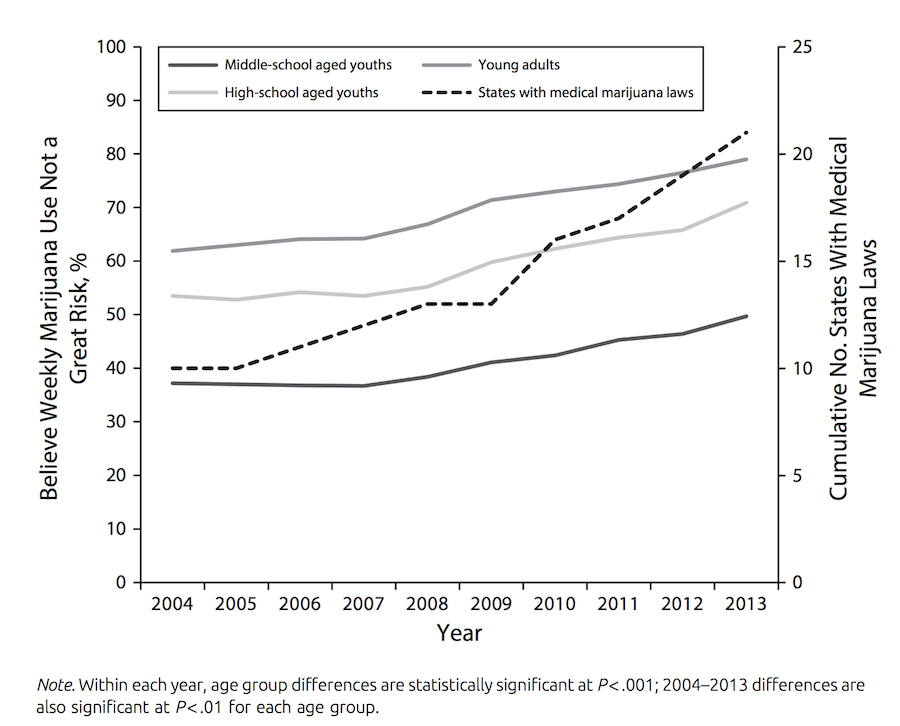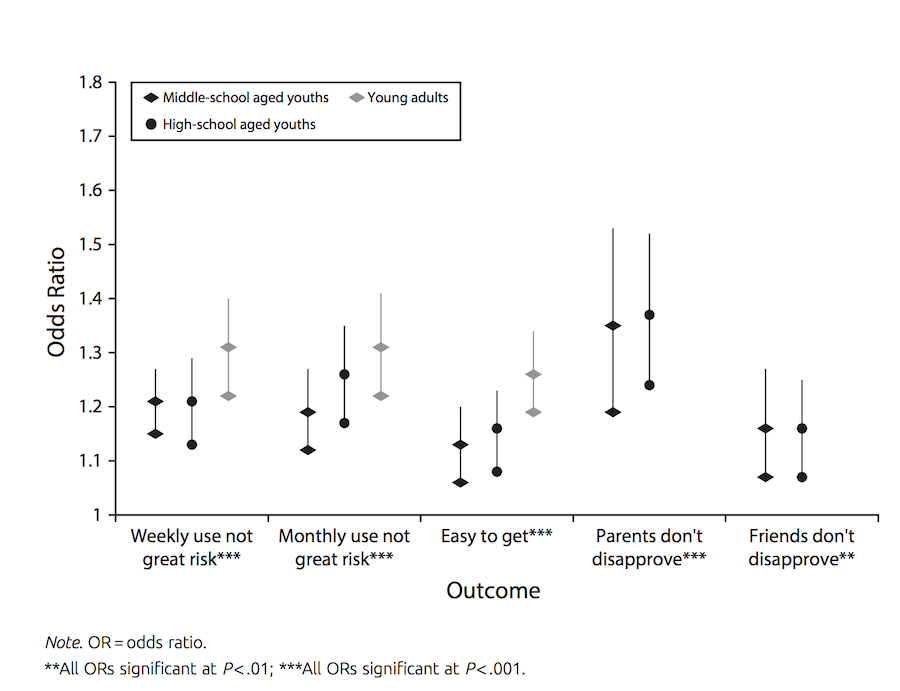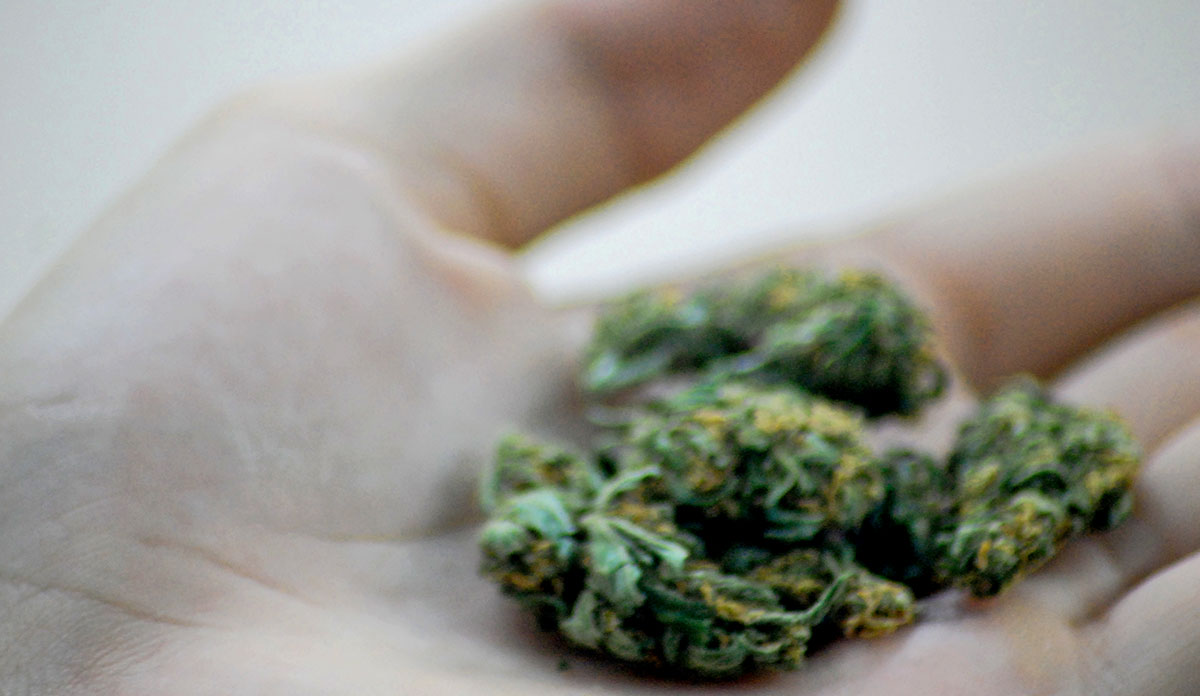“What about the children?” It’s one of the first questions you hear from opponents in just about any conversation on loosening laws around controlled substances, from alcohol to cigarettes to prescription drugs. Advocates and politicians have leaned heavily on this argument when it comes to marijuana: if it becomes legally and socially acceptable for adults to use it, young people will also adopt more permissive attitudes toward the drug. It’s an important issue to consider in a country where 28 states now permit medical marijuana and eight allow recreational use of the drug—a number that doubled after last week’s election.
A new study conducted by researchers at the Philip R. Lee Institute for Health Policy Studies has attempted to examine this argument by asking if state-level laws directly affect young people’s attitudes toward marijuana. The study used 10 years of data from the National Survey on Drug Use and Health, a yearly survey that provides national and state-level data on the use of tobacco, alcohol and illicit drugs conducted by the Substance Abuse and Mental Health Administration.

While the survey includes people of all ages, researchers chose to use data from three age groups: middle school aged children from 12 to 14 years old, high school aged adolescents from 15 to 17, and young adults from 18 to 25. The researchers elected to focus on these groups because, according to previous research, most people form their beliefs about drugs and alcohol during adolescence and young adulthood. These attitudes are the strongest single predictor of drug use later in life.
Over the course of the ten years the study covered, the number of states allowing medical marijuana use rose from 10, in 2004, to 21, along with the District of Columbia, in 2013. During this same period, young people in all age groups grew less concerned about the safety of using marijuana. In 2004, 53% of young people polled said that weekly marijuana use was “not a great risk.” By 20013, this percentage had risen to 71%.

This pattern became much more pronounced after 2009, coinciding with a rapid increase in states allowing for medical marijuana use. Since that year, 11 states and the District of Columbia have passed medical marijuana laws. During this time three states and DC have legalized recreational marijuana as well.
As one might expect, the researchers initially found a strong link between more permissive attitudes toward marijuana and living in a state with legal medical marijuana. However, when controls were introduced for fixed state-level factors like more liberal social attitudes and less religious populations, this correlation disappeared. According to the researchers, this indicates “a more liberal orientation in states that pass medical marijuana laws” rather than a causal relationship between more permissive marijuana laws and greater acceptance of marijuana among young people. They concluded that these results point to a more general liberalization of our society’s views on marijuana. It is likely, in their view, that this increased acceptance of marijuana could be driving the trend of states legalizing the drug in various capacities , rather than the other way around.
These results could certainly be interpreted as a feather in the cap for those who argue that legalizing marijuana does not greatly affect young people. However, there is also an important message for those looking to prevent marijuana use among these populations. This study points to the possibility that young people’s changing attitudes toward the drug is a product of a larger shift in the national consciousness, rather than a result of local laws. If this is true, that means that time, effort, and money spent might be better spent educating underage people about marijuana rather than fighting against these laws at the local and state level. With four new states, including California, legalizing Marijuana by referendum in 2016 and more likely on the way in the coming years, it’s a trend that policymakers will have to carefully consider.
Graphs from Young People’s More Permissive Views About Marijuana: Local Impact of State Laws or National Trend? Laura A. Schmidt, PhD, MSW, MPH, Laurie M. Jacobs, PhD, and Joanne Spetz, PhD, American Journal of Public Health. 2016 Aug;106(8):1498-503. doi: 10.2105/AJPH.2016.303153. Epub 2016 May 19.
Featured image by Katheirne Hitt, marijuana 2, used under CC BY-ND 2.0













